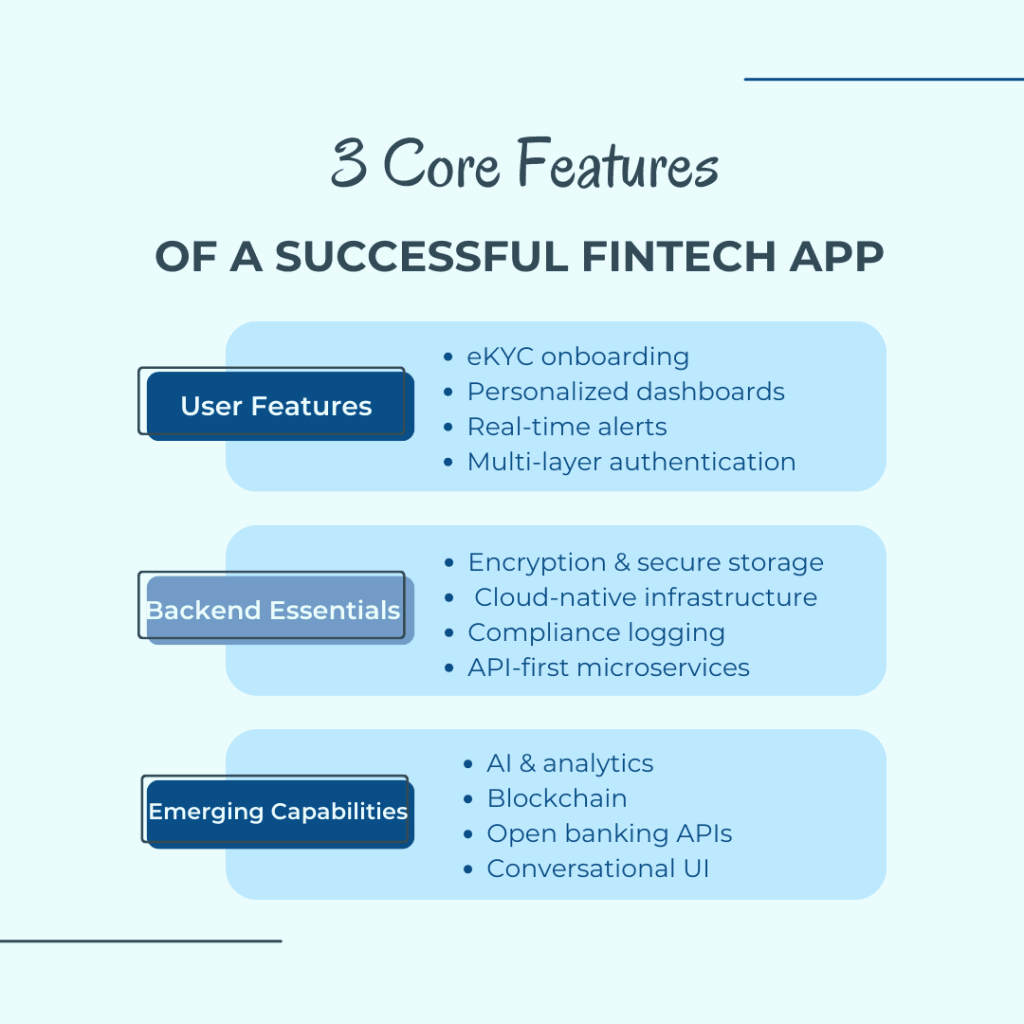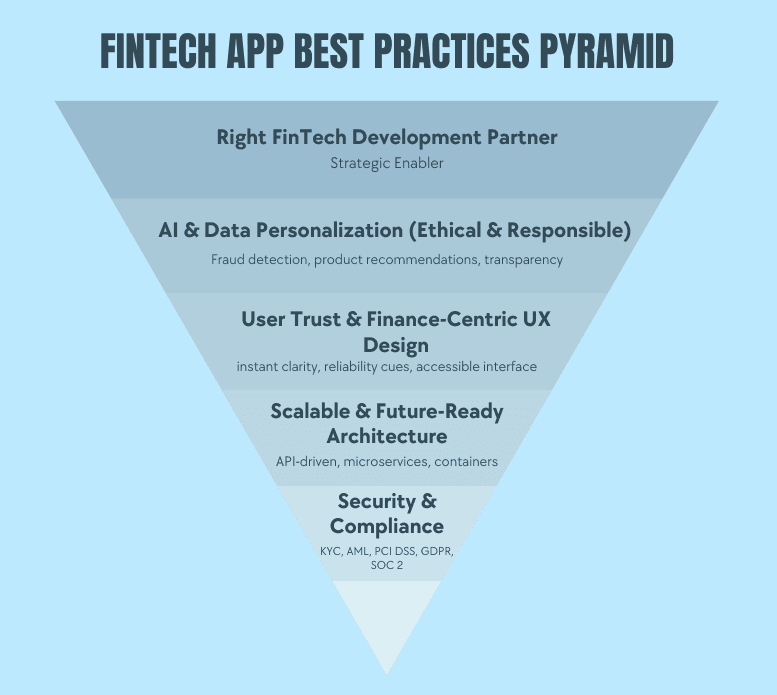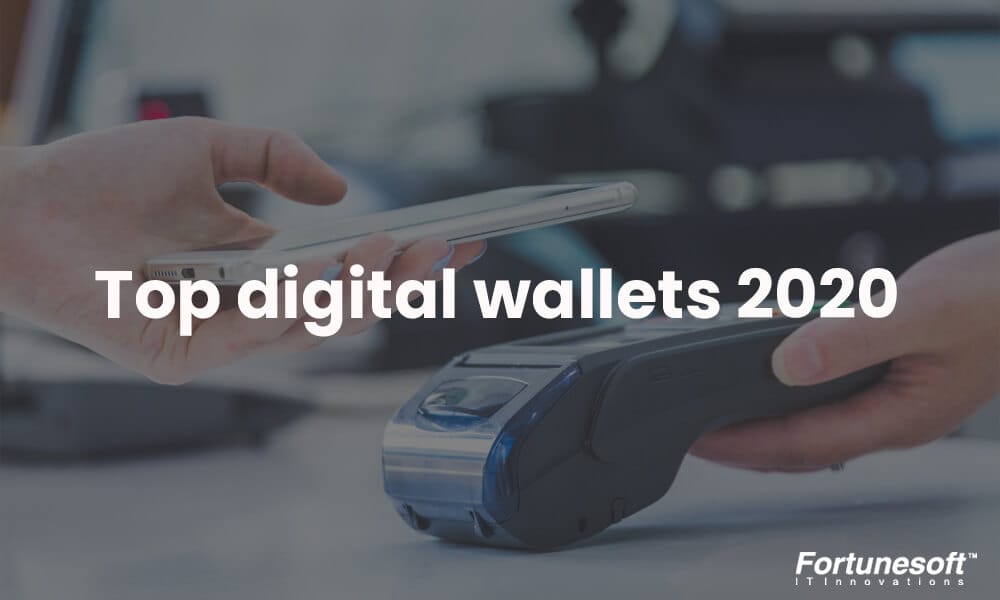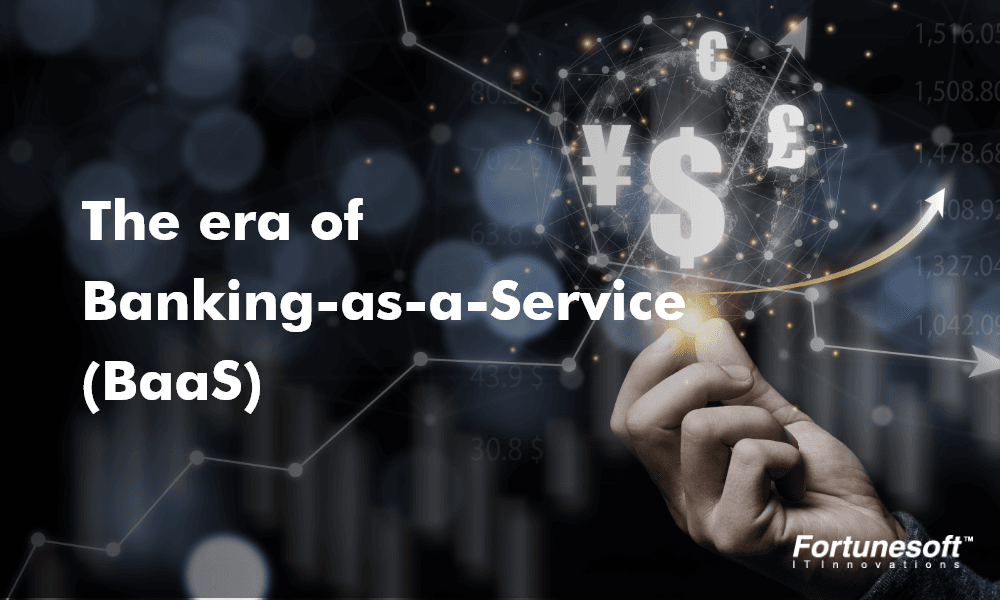 By Jophin November 21, 2025
min read
By Jophin November 21, 2025
min readBest Practices to Consider While Developing Fintech Apps
The pace of financial innovation and digital adoption has never been faster. From digital banking to embedded finance, today’s FinTech ecosystem is redefining how businesses, consumers, and financial institutions interact. Yet, as the potential grows, so do the challenges-ensuring compliance, maintaining user trust, and scaling securely. Many businesses recognize FinTech as the future but struggle to navigate its complex regulatory and technological landscape.
This FinTech app development guide offers a practical, best-practice-led roadmap for developing secure, compliant, and future-ready FinTech apps that align with evolving user expectations and global standards.
Why FinTech Continues to Command Enterprise Investment
The momentum behind FinTech isn’t driven by technology alone – it’s driven by changing business models, evolving customer expectations, and regulatory pressure to modernize financial infrastructure. Organizations are investing in FinTech because the competitive landscape now rewards speed, security, interoperability, and experience-led financial services.
Today, FinTech applications are less about “building an app” and more about digitizing value delivery, automating operations, enabling real-time decisioning, reducing cost-to-serve, unlocking new revenue streams, and ensuring compliance at scale.
Building such solutions often requires domain-specific expertise and a compliance-first approach, which is why many enterprises partner with specialized Fintech Software Development Services providers to ensure their applications meet both innovation and regulatory benchmarks.
Types of FinTech apps shaping the industry
The FinTech landscape is broad, with each category catering to a unique user or business goal:
- Digital banking apps – including neobanking platforms offering branchless, 24/7 access to financial services.
- Payment and transfer apps – including Digital Wallets and cross-border remittance platforms.
- WealthTech platforms – supporting investment management, robo-advisory, and portfolio analytics.
- InsurTech apps – automating underwriting, claims, and customer onboarding.
- Lending and credit solutions – such as P2P Lending Platforms that connect borrowers and investors directly.
Beyond these, the enterprise FinTech ecosystem is also expanding into areas like RegTech, embedded finance, open banking platforms, B2B treasury systems, and digital asset solutions, reflecting the shift toward connected, real-time, and compliance-first financial ecosystems.
Together, these categories reflect FinTech’s expanding role in reshaping global financial accessibility and efficiency.
FinTech vs traditional banking: What’s driving the shift?
Traditional banking systems often struggle with legacy infrastructure, manual processes, and slow service delivery. FinTech apps, on the other hand, thrive on speed, transparency, and user personalization.
What drives this shift is digital-first thinking; users today expect real-time approvals, contextual insights, and frictionless experiences. Businesses are embracing FinTech to unlock agility, expand reach, and build trust through data-driven personalization and open-banking innovation. In essence, FinTech represents not just technology adoption, but a strategic move toward resilient, customer-centric financial ecosystems.
As adoption accelerates and expectations rise, the way organizations design and develop FinTech applications becomes a decisive competitive factor, which brings us to the best practices shaping successful FinTech product delivery today.
Understanding the FinTech Market Landscape
Global FinTech market trends and growth outlook
The global FinTech sector continues its exponential rise as businesses digitize financial services across industries. According to JETIR, the global FinTech market is projected to surpass $305 billion by 2025, driven by demand for mobile banking, AI-driven analytics, and open financial ecosystems. Gartner forecasts that more than 30% of the increase in demand for APIs will come from AI and tools using large language models (LLMs) by 2026.
This growth highlights a crucial business opportunity – organizations that modernize early not only enhance efficiency but also build resilience against economic volatility and regulatory shifts.
Why startups and enterprises are investing in FinTech modernization
FinTech modernization is now a board-level priority. Startups leverage FinTech to disrupt niche financial services with agility, while enterprises invest in modernization to stay competitive, reduce costs, and enhance operational transparency.
Key drivers include:
- Customer demand: End-users expect instant transactions, multi-channel access, and personalized insights.
- Cost optimization: Automation, API-driven integrations, and cloud infrastructure reduce manual overhead.
- Inclusion and reach: FinTech solutions enable access to underserved and global markets.
- Embedded finance: Businesses across retail, logistics, and healthcare are embedding payment and credit options directly within their platforms.
Together, these forces are pushing every sector to think “FinTech-first” – not just in service delivery, but in strategic growth planning.
The role of innovation, compliance, and user experience in FinTech success
Innovation attracts users. Compliance retains them. User experience converts them into loyal customers. The intersection of these three pillars defines sustainable success in FinTech. Regulatory alignment (KYC, AML, GDPR) ensures credibility, while secure, intuitive interfaces reinforce trust – especially critical when dealing with financial data. Forward-thinking businesses partner with trusted Fintech Software Development Service providers to achieve this balance between innovation and compliance, ensuring scalability without compromising governance.
Modern FinTech growth depends not just on technology adoption, but on continuous innovation, delivering speed, security, and personalization at every digital touchpoint.
Financial Software Development in Modern FinTech – What Business Leaders Should Know
Financial software development has become the competitive backbone of modern FinTech. Today’s digital-first financial ecosystem depends on platforms that are secure, scalable, compliant, and capable of integrating with banks, payment processors, and data providers in real time. For business leaders, understanding what separates ordinary app development from modern FinTech software development is critical for faster go-to-market, stronger regulatory trust, and long-term product scalability.
What Financial Software Development Means in a FinTech Context
In FinTech, software development is not just about building an app; it is about creating a high-performance financial infrastructure that enables:
- Real-time transactions and settlements
- Multi-party data exchange through APIs and open banking standards
- Automated financial workflows and reporting
- Audit-ready compliance data trails
- Seamless user experience across web, mobile, and enterprise systems
A robust FinTech platform integrates payment gateways, fraud detection systems, KYC/AML services, core banking systems, analytics engines, and regulatory reporting pipelines into a single reliable architecture. This is what enables leading financial products to deliver transparency, speed, and trust at scale.
How FinTech Software Development Differs from Standard App Development
Unlike general mobile or web development, financial software development operates under higher stakes, where decisions directly impact:
- Regulatory exposure
- Financial loss
- Customer trust
- Operational continuity
FinTech platforms must deliver:
- Low-latency, high-volume performance
- Zero downtime SLAs
- Encrypted multi-party data exchanges
- Automated fraud monitoring and risk scoring
- Compliance with standards such as PCI DSS, SOC 2, GDPR, PSD2, and regional banking mandates
This makes FinTech engineering a strategic initiative where architecture, data security, and regulatory assurance matter as much as features and UI.
Why Domain Expertise and Compliance Leadership Matter
Success in FinTech depends on more than technology – it requires deep financial domain knowledge. Understanding:
- Banking rules and payment standards
- Identity verification and authentication requirements
- Market-specific regulations and data residency laws
- Financial workflows and risk models
can significantly reduce compliance delays, audit risks, and engineering rework.
This is why enterprises increasingly partner with specialized FinTech software development services providers, teams that can execute both the technical build and the regulatory alignment needed to launch quickly and scale confidently.
A strong partner ensures the platform is:
- Secure by design
- Interoperable with core financial systems
- Regulator-ready from day one
- Optimized for enterprise-grade growth and reliability
Why This Matters for Business Leaders
For CEOs, CTOs, and product executives, choosing the right development approach directly influences:
- Time-to-market
- Customer trust and adoption
- Cost of compliance
- Scalability and long-term competitiveness
Modern FinTech winners are not the companies that build the most features—they are the companies that deliver secure, regulated, connected, and future-proof financial ecosystems faster than the market demands.
Core Features of a Successful FinTech App

Essential user-side features
A winning FinTech app starts with the user. The front end must combine simplicity, speed, and security to build trust and loyalty. Core user-facing features typically include:
- KYC and onboarding: Seamless, compliant, and paperless verification through eKYC and biometric authentication.
- Personalized dashboards: Unified financial views that help users track spending, transactions, and portfolio performance.
- Instant transfers and real-time notifications: Transparent movement of funds builds confidence and engagement.
- Multi-layer authentication: Two-factor or biometric authentication ensures sensitive data is always protected.
Each of these features plays a role in making the FinTech experience both personal and dependable, encouraging sustained customer engagement.
Backend essentials
Behind every great FinTech app lies a robust backend that ensures uptime, security, and data integrity. The foundation includes:
- Data encryption and secure storage: Protects sensitive user and transactional data.
- Cloud-native infrastructure: Enables elastic scalability as user volumes grow.
- Compliance logging and monitoring: Real-time system checks aligned with global standards like SOC 2, GDPR, and PCI DSS.
- Microservices and API-first architecture: Streamlines integrations with banks, payment processors, and third-party services.
This architecture ensures the application remains resilient under load, scales across geographies, and integrates smoothly into financial ecosystems.
Emerging capabilities
Modern FinTech apps are rapidly embracing next-generation technologies that redefine financial experiences:
- AI and data analytics: Enable smart recommendations, fraud detection, and hyper-personalization.
- Blockchain integrations: Offer enhanced transparency and traceability for transactions.
- Open banking APIs: Foster interoperability and new revenue models through secure data sharing.
- Conversational interfaces: AI-powered chatbots simplify user interactions and support.
Enterprises that embed these technologies early can differentiate faster and stay relevant in evolving markets.
Whether it’s a Digital Wallet, P2P Lending Platform, or a cross-border payments solution, the common thread is an intelligent design that balances innovation with compliance.
FinTech App Development Best Practices
Below is a comprehensive fintech app development guide outlining proven best practices followed by successful digital financial products.

Prioritize security and compliance (KYC, AML, PCI DSS, GDPR, SOC 2)
Security is the foundation of any FinTech solution. A single breach can erode years of brand trust. The most successful FinTech apps adopt a compliance-first design – embedding regulatory requirements like KYC, AML, GDPR, PCI DSS, and SOC 2 from day one.
This includes encrypted data handling, consent-based data sharing, and regular security audits. Beyond technical controls, businesses must also cultivate a compliance culture—where every feature is designed with privacy, transparency, and accountability in mind.
Ensure scalability and future-proof architecture
FinTech markets evolve fast; apps must keep up. A scalable architecture built with microservices, containerization, and API-driven design ensures agility as customer demands grow.
Future-proof systems also support continuous updates, faster deployment cycles, and easy integration with banking APIs, third-party payment systems, and regulatory tech. Scalability is not just about performance – it’s about sustaining innovation in a landscape where new regulations and technologies emerge every quarter.
Design for usability and trust (UX/UI best practices for Finance)
Trust in FinTech is emotional before it’s technical. A clear, intuitive design helps users feel in control of their finances. Simplified navigation, visual consistency, and instant feedback loops reduce cognitive load and strengthen retention.
For C-suite decision-makers, investing in strong UX/UI isn’t cosmetic; it’s risk mitigation. Transparent design and visible security signals (like verified badges and OTP layers) communicate reliability to users who are often skeptical about digital finance.
Leverage data-driven personalization and AI responsibly
Modern FinTech success is driven by intelligent personalization, AI models that recommend products, predict user needs, and detect fraud in real time. Yet, as AI regulations tighten, it’s critical to ensure algorithmic transparency and ethical data use.
Enterprises that balance automation with explainability not only align with compliance expectations but also earn customer trust and regulatory goodwill—both invaluable in a trust-based industry.
Partner with the right FinTech app development company
Even the most forward-thinking strategy fails without the right execution partner. When evaluating a FinTech app development company, look for:
- Proven domain experience across banking, lending, and payment ecosystems
- Compliance readiness and familiarity with financial data standards
- Agile delivery frameworks for speed and flexibility
- Post-deployment support to maintain app stability and scalability.
FinTech App Development Guide – Step-by-Step
When following a structured fintech app development guide, these stages help teams move from concept to compliant market launch efficiently.

Every FinTech app is a chance to reimagine how money moves, connects, and creates value. From concept to compliance, every step impacts user trust, market positioning, and long-term ROI.
Step 1 – Define Your Market, Value Proposition & Business Model
Start by validating where the product fits in the financial ecosystem and who it serves. Clarity around audience (retail, SMB, enterprise, or institutional), product value, and revenue model creates alignment across execution, compliance planning, and cost projections from day one.
Step 2 – Choose the Right Tech Stack & Strategic Development Partner
Your technology choices define performance, scalability, and long-term maintainability. Equally important is selecting a development partner who understands financial regulations, security controls, third-party integrations, and sector-level risks. This ensures faster execution without compromising compliance or resilience.
Step 3 – Plan a Secure User Experience & Onboarding Journey
In FinTech, onboarding is not just UI — it is trust.
User flows should embed KYC, AML, identity verification, role management, consent, and data handling fundamentals. A well-designed onboarding process improves security, reduces abandonment, and sets the foundation for future regulatory alignment.
Step 4 – Build a Compliance-Ready MVP
The MVP phase is where the core product goes live with validated features. Instead of going all-in at once, launch a minimum viable version that:
- Proves product-market fit
- Meets regulatory requirements
- Collects real usage feedback
- Demonstrates traction to stakeholders and investors
A compliance-first MVP minimizes rework and ensures you are building on top of a secure, auditable foundation.
Step 5 – Integrate Financial Systems & External APIs
Whether connecting to payment gateways, banking systems, open banking frameworks, credit bureaus, or fintech data services, seamless and secure integration is essential. API strategy at this phase determines transaction speed, reliability, data transparency, and partner ecosystem compatibility.
Step 6 – Scale with Analytics, Automation & Continuous Delivery
Once you achieve product-market fit, the focus shifts to growth.
This is where organizations benefit from:
- Continuous integration and delivery (CI/CD)
- Usage analytics and behavioral insights
- Fraud detection and monitoring automation
- Performance optimization and cloud scalability
This creates a FinTech product that can adapt to new regulations, market demands, and user expectations — while remaining cost-efficient and future-ready.
By following this structured roadmap, businesses can move from idea to execution with precision—building a FinTech product that’s not only compliant but also commercially competitive and trusted by users.
Factors That Influence FinTech App Development Cost
Building a FinTech application is a long-term business investment shaped by multiple strategic, technical, and compliance-driven factors. Understanding these elements helps leaders evaluate project value rather than just development expenses.
App complexity and feature set
The sophistication of your app, whether it’s a simple peer-to-peer payment tool or a multi-layered Crowdfunding Platform, determines the scope of design, integrations, and testing. Advanced features such as AI-driven analytics, personalized dashboards, or blockchain authentication require additional engineering depth to ensure accuracy, scalability, and compliance.
Integration requirements (APIs, third-party systems)
FinTech success relies on seamless integrations. Connecting your platform to payment gateways, banking APIs, credit bureaus, or identity verification systems demands a secure architecture and robust data orchestration. The more integrations involved, the greater the need for meticulous validation and performance optimization.
Security, compliance, and testing overhead
Security is non-negotiable in FinTech. Meeting standards like PCI DSS, SOC 2, and GDPR requires advanced encryption, access controls, and multi-layer audits. Continuous security testing, covering vulnerabilities, transaction integrity, and fraud detection, adds necessary rigor to development, safeguarding brand trust.
Team expertise and region
Finally, project success hinges on the expertise of the development team. FinTech projects need specialists who understand not only technology but also financial workflows, compliance frameworks, and regulatory variations. Choosing a seasoned partner with proven FinTech delivery maturity – supported by domain-specialized developers across FinTech, Healthcare, and Life Sciences- ensures every stage, from design to deployment, aligns with your business, security, and compliance goals.
By assessing these dimensions through a value-first lens, businesses can make informed decisions that balance innovation, reliability, and regulatory assurance.
Why FinTech App Development Best Practices Matter for Businesses
The value of FinTech – and by extension, effective FinTech app development best practices- extends far beyond digital convenience. It is reshaping how banks, startups, and enterprises operate, compete, and scale in modern financial ecosystems. When done right, FinTech development delivers immediate and long-term business impact, from cost efficiency to customer loyalty.
Digital transformation and cost optimization
FinTech allows organizations to automate manual processes, modernize legacy infrastructure, and accelerate speed-to-market. Cloud-native architectures and modular development approaches reduce technical debt, enable rapid scaling, and maintain compliance. For banks and financial institutions, this becomes the backbone of future-ready digital transformation.
Customer experience and retention
Modern users expect more than transactions—they expect frictionless experiences. FinTech apps enable hyper-personalization, instant support, and seamless onboarding, which are crucial for improving retention. With predictive analytics, AI-powered chat, and contextual insights, organizations build trust and long-term customer engagement.
Operational agility and ecosystem connectivity
FinTech also unlocks ecosystem agility – connecting traditional enterprises with digital platforms, APIs, open banking partners, and real-time data flows. This interoperability allows faster product rollouts, embedded finance models, and rapid expansion into new markets. Whether adding BNPL services or enabling cross-border transactions, the right development approach ensures regulatory compliance and market responsiveness.
For growing organizations, the ROI of FinTech development lies in its ability to combine innovation with compliance, creating scalable, secure, and competitive digital financial experiences.
Why Choose Fortunesoft as Your FinTech App Development Partner
Building a successful FinTech product requires more than code – it demands industry expertise, trust, and precision. As an experienced FinTech app development company, Fortunesoft helps financial enterprises, startups, and innovators turn bold ideas into compliant, scalable, and high-performing digital products.
Our Fintech Software Development Services are designed to help you accelerate product delivery, strengthen security, and enhance user trust. From digital wallets and lending platforms to investment and payment ecosystems, we build solutions that combine cutting-edge tech with deep financial logic – ensuring every feature aligns with your business goals and customer expectations.
Partnering with Fortunesoft means you get a strategic technology ally, not just a vendor. We bring 16+ years of FinTech engineering experience, agile delivery frameworks, and certified cloud and compliance expertise to help you minimize risk and maximize ROI.
What makes Fortunesoft the preferred FinTech development partner:
- Consultative approach: We begin with your business objectives and design a roadmap that balances innovation and compliance.
- Security by design: Our experts integrate advanced encryption, identity verification, and regulatory compliance (PCI DSS, GDPR, PSD2) at every stage.
- Faster go-to-market: Agile methodologies, reusable components, and cross-functional teams help reduce development cycles.
- Future-ready scalability: Cloud-native architectures and API-driven models ensure long-term performance and flexibility.
Partner with Fortunesoft to build FinTech solutions that drive growth, compliance, and customer trust.
Schedule a consultation
FAQ
1. What is a FinTech app?
A FinTech app is a digital solution that enables financial services such as payments, lending, investments, or banking through web or mobile platforms.
2. What are the types of FinTech apps?
Popular FinTech app types include digital wallets, P2P lending platforms, neobanking apps, investment platforms, crowdfunding platforms, and BNPL solutions.
3. How do I develop a FinTech app?
To develop a FinTech app, define your business model, ensure compliance, choose secure technology, partner with a reliable FinTech app development company, and implement continuous testing and monitoring.
4. What are the must-have features of a FinTech app?
Essential features include multi-layer security, digital onboarding, AI-driven insights, real-time payments, and regulatory compliance tools.
5. How can FinTech benefit banks and financial institutions?
FinTech helps banks improve efficiency, automate operations, reduce costs, and deliver more personalized and accessible financial services to customers.
6. What compliances should a FinTech app follow?
A FinTech app must follow key regulations such as KYC, AML, PCI DSS, GDPR, SOC 2, and data privacy laws based on the regions it operates in. Depending on the product type, additional requirements like PSD2, Open Banking standards, UPI guidelines, or lending/insurance regulations may apply. Ensuring compliance from day one reduces risk and builds user trust.
Conclusion
Building a FinTech app isn’t just about launching another digital product; it’s about building trust, transparency, and transformation in how people and businesses handle money. The competition is fierce, the regulations are complex, and the user expectations are higher than ever. Success today depends on how well you combine innovation, compliance, and scalability from the very first line of code.
By following these fintech app development best practices, from embedding strong security protocols and regulatory frameworks to designing intuitive, data-driven experiences, you position your FinTech solution not just for market entry, but for long-term dominance in a fast-changing financial ecosystem.
At Fortunesoft, we’ve helped startups and enterprises across payments, lending, and wealth management bring their FinTech visions to life. Our Fintech Software Development Services are designed to deliver compliant, cloud-native, and scalable financial solutions that evolve with your business and user needs.
If you’re ready to transform your financial idea into a future-ready platform – let’s collaborate. Together, we’ll build a FinTech app that’s secure, compliant, and built for growth.
Partner with Fortunesoft to create your next FinTech innovation that inspires trust and accelerates digital transformation.
Sources
Author Bio


 Facebook
Facebook Whatsapp
Whatsapp LinkedIn
LinkedIn Pinterest
Pinterest














 Start Chat
Start Chat